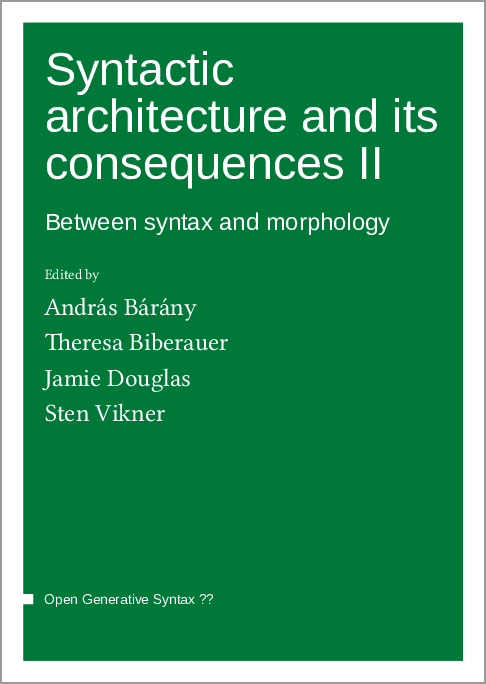We log anonymous usage statistics. Please read the privacy information for details.
Syntactic architecture and its consequences II: Between syntax and morphology
Synopsis
This volume collects novel contributions to comparative generative linguistics that “rethink” existing approaches to an extensive range of phenomena, domains, and architectural questions in linguistic theory. At the heart of the contributions is the tension between descriptive and explanatory adequacy which has long animated generative linguistics and which continues to grow thanks to the increasing amount and diversity of data available to us.
The chapters address research questions in comparative morphosyntax, including the modelling of syntactic categories, relative clauses, and demonstrative systems. Many of these contributions show the influence of research by Ian Roberts and collaborators and give the reader a sense of the lively nature of current discussion of topics in morphosyntax and morphosyntactic variation.
This book is complemented by volume I available at https://langsci-press.org/catalog/book/275 and volume III available at https://langsci-press.org/catalog/book/277.
Chapters
-
Rethinking universality
-
Reconciling linguistic theories on comparative variation with an evolutionarily plausible language faculty
-
Rethinking RemergeMerge, movement and music
-
Life without word classesOn a new approach to categorization
-
The MatrixMerge and the typology of syntactic categories
-
On a difference between English and Greek and its theoretical significance
-
Rethinking linearization
-
Rethinking the reach of categorical constraintsThe Final-over-Final Constraint and combinatorial variability
-
Rethinking restructuring
-
Rethinking phrase structure
-
Strong and weak “strict cyclicity” in phase theory
-
On the Coordinate Structure Constraint and the Adjunct Condition
-
Re-thinking re-categorizationIs ‘that’ really a complementizer?
-
Types of relative pronouns
-
Rethinking relatives
-
V3 in urban youth varieties of Dutch
-
Rethinking passivesThe canonical GOAL passive in Dutch and its dialects
-
Extraordinary second-position effects
-
Person splits in RomanceImplications for parameter theory
-
High and low phases in Norwegian nominalsEvidence from ellipsis, psychologically distal demonstratives and psychologically proximal possessives
-
Rethinking microvariation in Romance demonstrative systems
-
Preliminary notes on the Merge position of deictic, anaphoric, distal and proximal demonstratives




